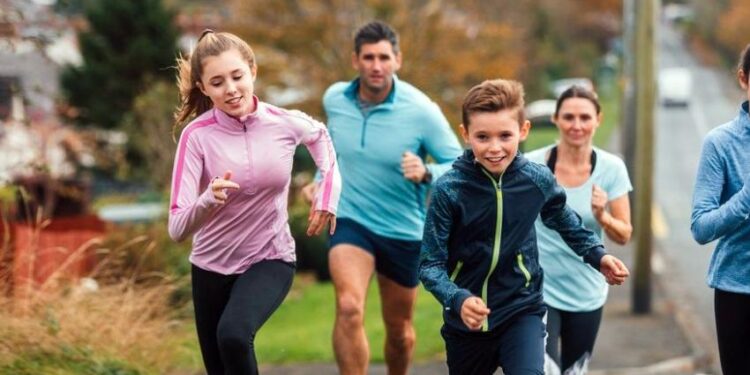Sports, lifestyle, and recreation form the foundation of a balanced, healthy, and fulfilling life. In today’s fast-paced digital era, where people are increasingly dependent on technology and face growing stress, these three elements serve as essential pillars for mental, physical, and emotional well-being. Engaging in sports, maintaining an active lifestyle, and participating in recreational activities not only improve fitness but also nurture teamwork, discipline, and joy.
1. Understanding Sports, Lifestyle, and Recreation
Before exploring their importance, it’s essential to understand what each term truly means.
1.1 What is Sport?
Sport is a physical activity that involves skill, competition, and teamwork. It can range from individual pursuits like tennis or swimming to team sports like football, basketball, or cricket. Sports promote discipline, endurance, and a competitive spirit, making them a crucial part of personal development and social life.
1.2 What is Lifestyle?
Lifestyle encompasses a person’s daily habits, choices, and routines. It includes diet, physical activity, sleep, social relationships, and leisure. A healthy lifestyle focuses on maintaining balance—ensuring physical health, mental peace, and emotional stability.
1.3 What is Recreation?
Recreation refers to any activity done for enjoyment, relaxation, or leisure. It includes hobbies such as hiking, dancing, painting, cycling, or traveling. Unlike sports, recreation is not necessarily competitive—it’s about rejuvenation and joy.
2. The Connection Between Sport, Lifestyle, and Recreation
Sport, lifestyle, and recreation are deeply interconnected. A person who engages in regular sports or recreational activities often leads a more balanced and fulfilling lifestyle. Sports enhance physical strength and teamwork, while recreation provides relaxation and stress relief. Together, they shape a holistic lifestyle that encourages both health and happiness.
For instance, playing a sport like badminton can improve physical endurance, while hiking or yoga can refresh the mind. Both are recreational yet deeply beneficial for maintaining an active and healthy routine. Also read More About Best Allama Iqbal Love Shayari.
3. The Role of Sports in a Healthy Lifestyle
3.1 Physical Fitness
Sports enhance cardiovascular health, muscle strength, and flexibility. Activities like running, swimming, or playing football help burn calories, improve blood circulation, and strengthen bones. Regularly engaging in sports reduces the risk of obesity, diabetes, and heart disease.
3.2 Mental Health Benefits
Participating in sports also has profound psychological effects. Physical activity releases endorphins—commonly known as “happiness hormones.” These chemicals reduce stress, anxiety, and depression. Sports also improve concentration, memory, and overall brain function.
3.3 Building Character and Discipline
Sports teach valuable life skills such as teamwork, leadership, discipline, and perseverance. Athletes learn to handle victories and defeats gracefully, building resilience and emotional maturity.
3.4 Social Interaction
Team sports foster community bonding and friendship. They encourage communication, mutual respect, and collaboration among participants from diverse backgrounds.
4. Recreation as a Path to Relaxation and Renewal
While sports can be physically demanding, recreation focuses on relaxation and enjoyment. Recreational activities rejuvenate the body and mind, allowing people to recover from daily stress.
4.1 Types of Recreational Activities
Recreation can be active or passive:
- Active recreation includes hiking, dancing, cycling, swimming, or gardening—activities that involve physical movement.
- Passive recreation includes reading, painting, listening to music, or watching movies—activities that provide mental relaxation.
4.2 Benefits of Recreation
Recreational activities help manage stress, boost creativity, and improve mood. They also strengthen social connections by encouraging participation in group events, clubs, or community programs.
4.3 Recreation and Work-Life Balance
In modern times, where work pressure dominates daily routines, recreation serves as a much-needed escape. It helps maintain a healthy balance between professional responsibilities and personal happiness.
5. Lifestyle Choices: The Foundation of Well-Being
A person’s lifestyle determines their overall health and quality of life. A balanced lifestyle includes proper nutrition, regular exercise, sufficient sleep, and positive social relationships.
5.1 Nutrition and Diet
Eating a balanced diet rich in fruits, vegetables, proteins, and whole grains fuels the body for sports and recreational activities. Avoiding processed food, excessive sugar, and alcohol further enhances energy and focus.
5.2 Physical Activity
Incorporating sports or recreation into daily life is vital. Even simple activities like walking, yoga, or cycling for 30 minutes a day can significantly improve fitness and mood.
5.3 Mental and Emotional Health
Meditation, mindfulness, and spending time with loved ones promote emotional balance. Recreational hobbies also reduce mental fatigue and encourage positivity.
5.4 Rest and Recovery
Adequate sleep allows the body to recover, repair muscles, and maintain energy levels. A lifestyle that combines sports, recreation, and proper rest is the true definition of wellness.
6. Sports and Recreation in Modern Society
6.1 Technology and Sedentary Lifestyles
Modern technology has made life convenient but also less active. Excessive screen time and sedentary work contribute to obesity and stress. Incorporating sports and recreation into daily life helps counter these effects.
6.2 Urban Development and Recreational Spaces
Governments and urban planners are increasingly emphasizing parks, gyms, and community centers to encourage outdoor activities. Such spaces promote public health and social engagement.
6.3 School and Community Programs
Educational institutions play a crucial role in promoting sports and recreation. Sports days, clubs, and after-school activities teach teamwork and discipline while keeping students active.
7. The Economic and Social Impact of Sports and Recreation
7.1 Employment and Industry Growth
The sports and recreation industry creates millions of jobs globally—from coaches and trainers to event organizers and fitness professionals. It also contributes significantly to tourism and the economy.
7.2 Cultural and Social Integration
Sports bring people together beyond social, religious, and cultural boundaries. Events like the Olympics or FIFA World Cup unite nations and foster global harmony.
7.3 Community Development
Local recreational programs help build stronger communities. They provide safe spaces for youth, reduce crime rates, and promote teamwork and inclusivity.
8. The Role of Government and Institutions
Governments and organizations worldwide recognize the importance of promoting sports and recreation for national health. Initiatives like community sports centers, public parks, and fitness campaigns motivate citizens to adopt active lifestyles. Schools, universities, and workplaces are increasingly including fitness programs and wellness sessions in their routines.
9. Challenges and the Way Forward
Despite awareness, several challenges hinder active lifestyles:
- Lack of time due to work pressure
- Limited access to safe recreational spaces
- Overdependence on technology
- Lack of motivation or awareness
To overcome these, society must encourage participation through awareness campaigns, better infrastructure, and inclusive sports programs. Family support and community engagement also play crucial roles in motivating individuals to stay active.
Conclusion: Living a Life of Balance and Vitality
Sport, lifestyle, and recreation are not luxuries—they are necessities for a healthy, fulfilling life. Together, they form the perfect triangle of fitness, happiness, and well-being. Sports strengthen the body and mind, lifestyle shapes daily habits, and recreation refreshes the soul.
In a world full of stress and competition, embracing sports and recreation can bring balance, purpose, and joy. Whether it’s a morning jog, a weekend hike, a game of cricket, or a quiet hour of painting—every moment spent actively living enriches our journey toward a healthier and happier life.









